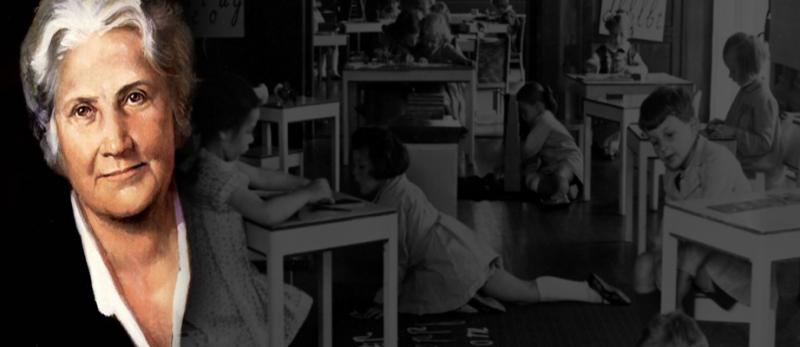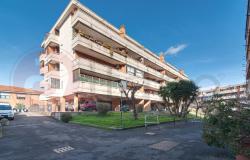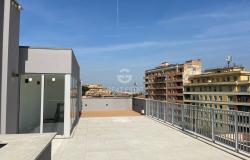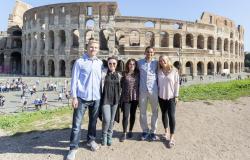On the 31st of August, we honored Maria Montessori's 142nd birth anniversary. Even google marked the date with a special doodle dedicated to this remarkable lady. She died on the 6th May 1952, in her eighty-first year, sixty years ago.
Unusual beginnings
Born in Chiaravalle, Ancona on the 31st of August 1870, in a time when the only career deemed acceptable for women was teaching, Maria Montessori showed tremendous determination in her decision to be a Doctor of Medicine. She rejected the idea of being a teacher which is surprising considering that later her life was devoted to educating. She had an aptitude for Mathematics and attended a technical school for boys, unusual at the time as girls were not usually accepted into boy’s schools, and certainly were not expected to take on technical subjects. Maria was definitely an unusual girl and was always prepared to stand up for herself and also for others less able to. She had a close relationship with her mother who was very supportive. Most people know of Maria Montessori as the founder of the Montessori Method in educating young children. Her method of education was a consequence of her discovery of the’ life within’, that is, within the soul of a child. Just as famous explorers discovered the ‘life without’ so her discovery was as important.
Breaking new ground
After the technical school she dropped her idea of engineering and decided to study medicine. This was unheard of for women, but she persisted by petitioning the pope! She then won scholarships to attend the University of Rome. She became the first woman medical student in Italy and in1896 the first Italian woman to take the degree of Doctor of Medicine. Maria Montessori always stood up for the right of women to work and also spoke out against the practice of using child labour. After she had qualified, she was given the position of assistant doctor at the psychiatric clinic in the University of Rome. It was at this time that she became interested in the work of Jean Itard and his student Eduoard Seguin, both of whom worked extensively with deficient children. Her interest in these children led her to enter the world of scientific pedagogy (holistic science of education) and become a crucial element in the forming of the first Orthophrenic School, which she directed for 2 years. The children she had at the school were deemed the most hopeless and had come from hospitals, orphanages, schools and even asylums. Montessori had made a study of nervous diseases in children and travelled to London and Paris to observe how defective children were being managed. She then returned to teach the children herself. Their progress was amazing. Some of them participated and succeeded in public examinations with normal children.
From 1896 she also occupied the Chair of Hygiene at the women’s college Magistero Femminile in Rome. In 1904 she was made a Professor at the University of Rome taking the chair of Anthropology for four years. Her work’ Pedagogical Anthropology’ was published at this time. She was lecturing, working at clinics and hospitals and still practicing privately.

San Lorenzo quarter- the slum children
In the very poor district of San Lorenzo the Institutio Romana dei Beni Stabile, a building society, had built blocks of flats to accommodate families from the area. The children in the buildings were often left to their own resources and these ’delinquent’ children vandalized the flats, being totally disorderly and without proper care. Dr Montessori was approached to look after these children. A single room was made available and more than fifty of these neglected and ‘vandal’ children became her responsibility. In her words ’they were like buds that seemed never destined to bloom.’ As it turned out they became her miracle!
Her belief was that children needed to be assisted (and not judged) to bring out their natural ‘love of order’. From her observations, she found that given freedom of choice within a prepared environment, children would quite naturally make good choices. Preferring work with apparatus to playing with toys, she found punishment unnecessary and was amazed that the children often refused rewards. She afforded them personal dignity and they revealed spontaneous self discipline, even to the extent of choosing to enjoy silence. The change in these children from a rabble of ‘delinquents’ to a self disciplined ,respectful, motivated , and orderly group was not only significant but almost beyond belief to those who came to observe the children. The children had free will and choice, the teacher was there to create the prepared environment, present the materials, and help the children direct their energies. The nature of the apparatus and materials enabled the children to develop their knowledge and skills, each one according to their own level of development. The psychological principals (the innate characteristics in human psychology) were behind the method allowing the children to learn without the need for instruction. Her belief that’ true mental work does not exhaust but gives nourishment, food for the spirit’ was about to bring a new awareness into the public realm. People, including dignitaries, travelled from all over the world to witness this ‘miracle’. Amongst the visitors was Queen Margherita of Savoy who later became the patroness of the Opera Montessori (Montessori Society).

The New children
By 1908 Dr Montessori was known all over the civilised world. The children were even referred to as the ‘New children’. Books were written and papers were published. Dr Montessori was pressed to write of her method. She wrote her first book ‘Method of Scientific Pedagogy as applied to Infant Education and the Children’s homes.’ The book was widely received. It has been translated into at least twenty different languages. In response to requests from all parts of the world, to impart the principles of her method that brought about this ‘miracle’, Dr Montessori made a decision.
Spreading the word
Somewhat like a missionary, Montessori decided that it was her work to go forth and share this knowledge. Financially she had no resources, other than royalties from her books and some remuneration from her teaching, yet she embarked on this journey. She resigned from lectureships, had her name removed as a practicing physician and followed her intuition into the unknown. Thus began the spread of the Montessori Method .On her first visit to America her lecture at the Carnegie Hall gathered over five thousand listeners, many more were turned away. Her writings were translated into most languages including Russian. Children’s houses were built in Germany, Austria, Holland, India, Italy and America. All were built proportionally to the needs of children not adults! Dr Montessori was welcomed everywhere and received as a dignitary and sometimes almost as royalty, as in her official visit to London in 1919. Many invitations were declined as she expressed that she could not spend her life just talking, she had work to do.

International training courses
These courses she gave lasted 6 months. She must have personally taught at least four thousand students. She seemed unstoppable regardless of place or politics, war or social circumstances. In 1939 she gave training courses in India, even though at that time she may have been considered an enemy alien because of Italy’s status during the war. In 1944 she was given government recognition in Ceylon. In her time, Montessori met many famous people, among them Mahatma Gandhi, Mr Nehru, Queen Margherita, Queen Victoria and Alexander Bell. These were busy years. In 1946 she received honorary fellowship at the Educational Institute in Scotland. In 1947 she returned to Italy to reinstate the Opera Montessori which had been suppressed during the fascist regime. 1948 saw her back in India where she was the guest of the Maharaja and Maharini of Gwalior. Her writings were translated into Tamil and Marathi. 1949 she went to Pakistan, then again back to Italy to attend the 8th International Montessori Congress at San Remo which was held in her honour. She was now in her late seventies yet she seemed tireless, perhaps reflecting her own belief that work does not exhaust! In 1950 she visited Norway and Sweden.
In her own country she was made an honorary citizen of Perugia, Ancona and Milan. Queen Wilhelmina of Holland conferred upon her the rank of Officer of the Order of Orange –Nassau. She was awarded honorary Doctor of philosophy at the University of Amsterdam.

Legacy
It was in Holland that she died at the age of 81. She was a phenomenal presence in her life but her work continues even decades later. Over 20,000 schools worldwide use the Montessori Method. Her statement that education is the 'armament for peace’ is as true today as in her time, for ‘within the child lies the fate of the future'. Dr Maria Montessori discovered a great treasure and shared it with the world. Quote: 'I began my work as a farmer who has set aside good seeds and who is offered a fertile field in which to sow it. But it turned out otherwise. I had hardly scratched the sods when I found gold instead of grain.’













